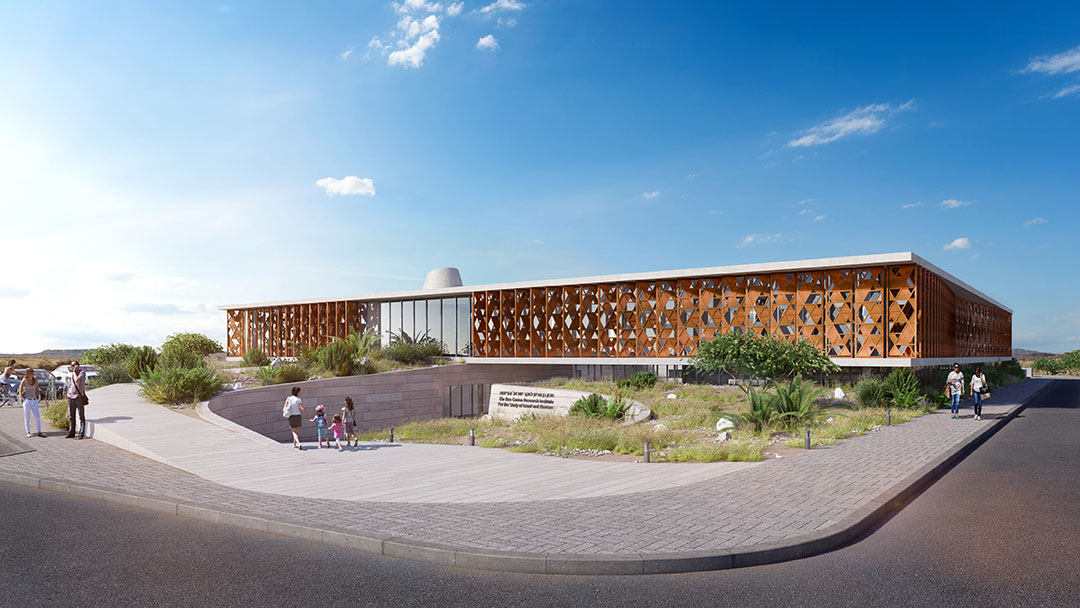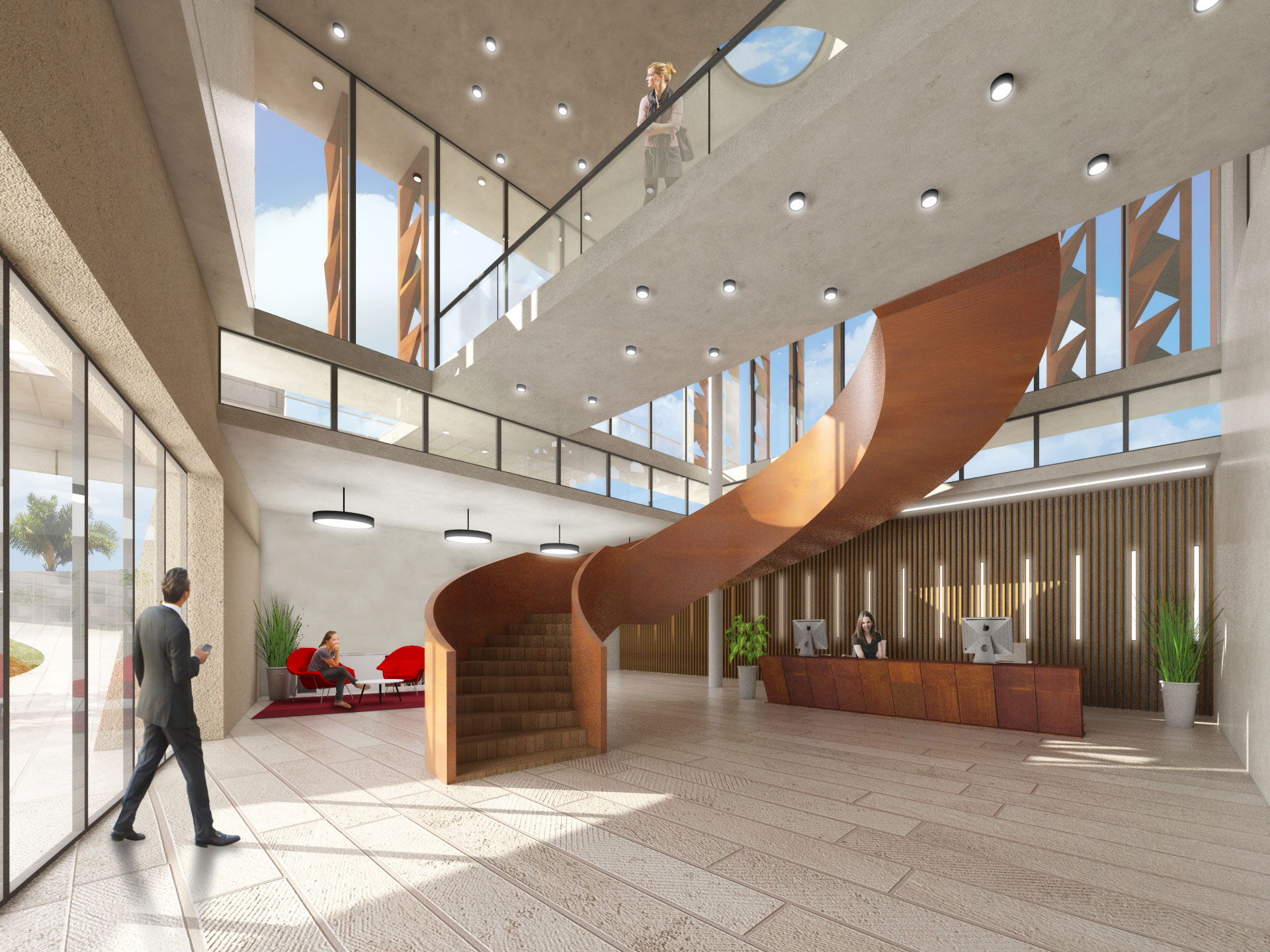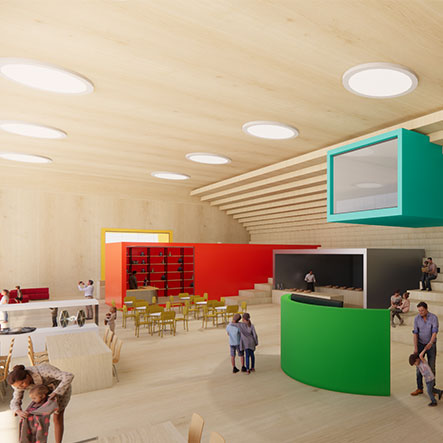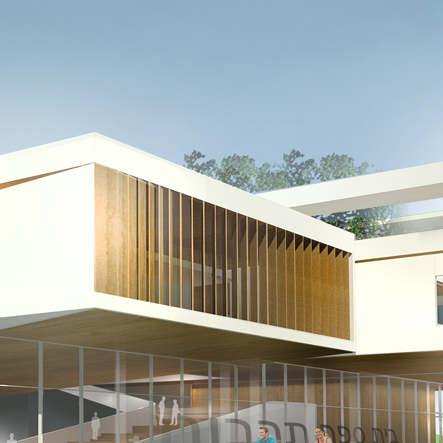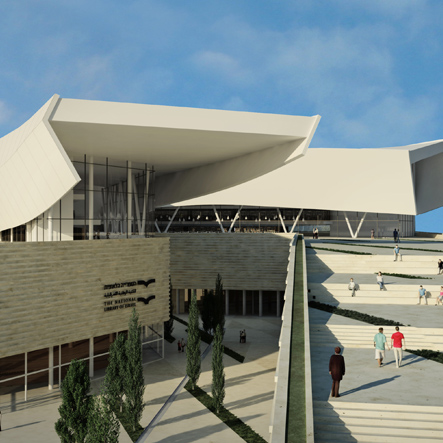Therefor, the low silhouette building integrates well with the inspiring landscape of Negev, in terms of form and height, materials and colors.
As part of Bioclimatic Design principals, planning the structure around a courtyard gives the building another “set” of southern facade, which contributes to the passive solar heating of the building during the winter months. The inner courtyard provides natural ventilation in the summer, and passive cooling of the structure during the night.
The lower level takes advantage of the thermal mass of the sunk structure and the soil around it, and creates an optimal environment for the functions it houses (Archive/Library).
All exterior facades are fixed with vertical metal shading screens which assure a proper shading solution for each direction during the summer months. Interior facades that face the courtyard can be shaded with simple louvers mounted inside or outside the windows.
In the North Façade the non-direct orientation towards the sun gives an opportunity to create variations in the metal screens perforation. While in the South Facade creating horizontal flaps in the metal screen creates a shading system which allows winter sun to penetrate the building, while blocking the intense summer sun.
Natural light is highly utilized and adjusted with the shading systems. This combination simultaneously reduces the use on artificial light, saves energy and prevents the users from being blinded by direct sunlight.
The vast roof area is used for the collection of rain water, that are stored in an underground reservoir and later used for irrigation and WC flushing tanks.






